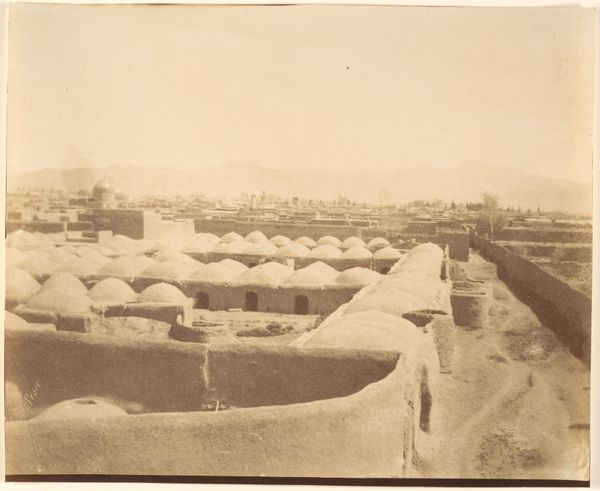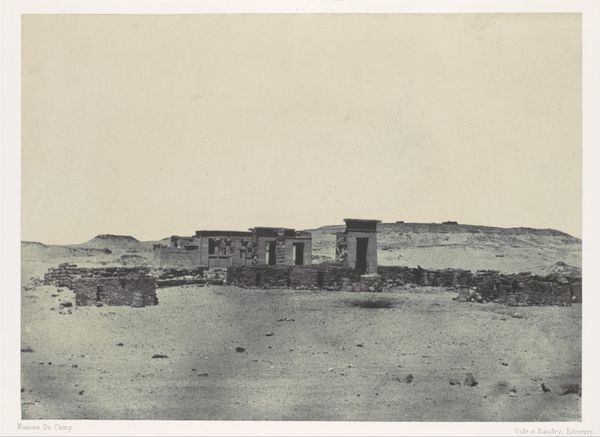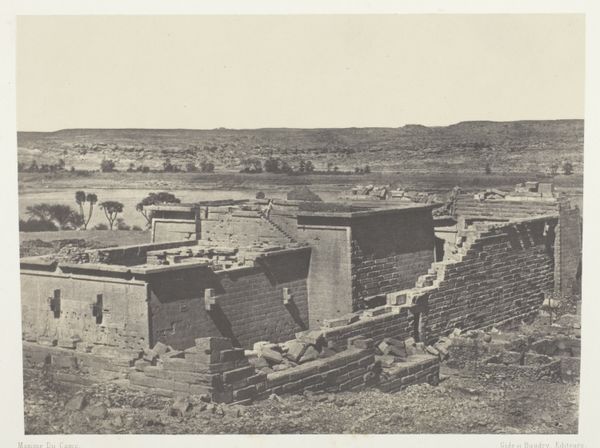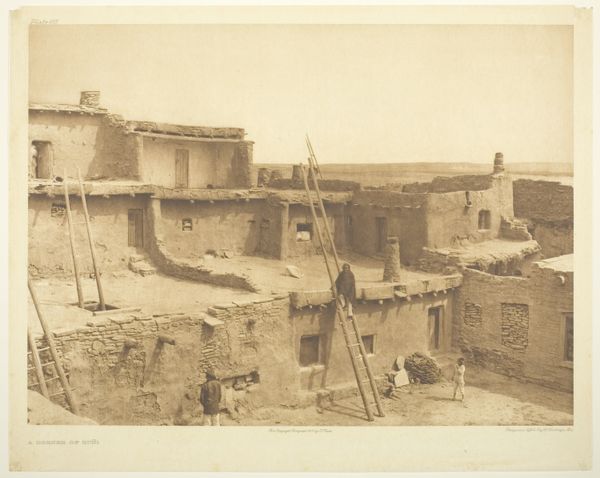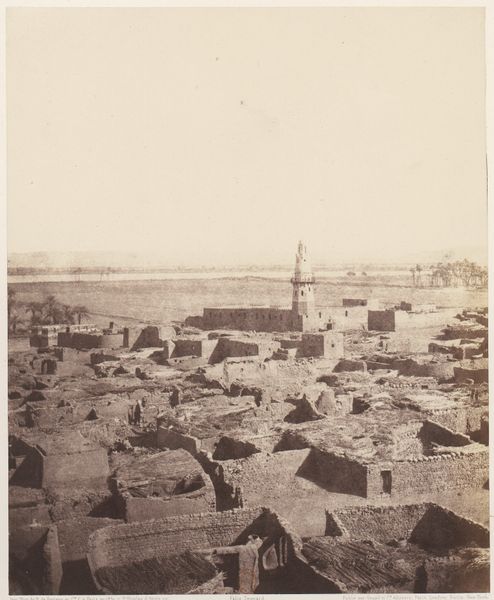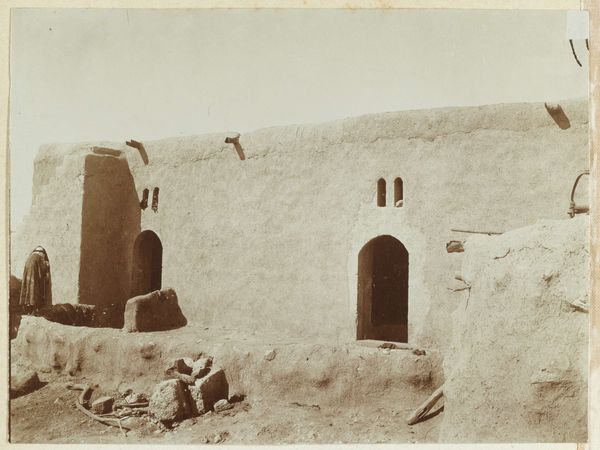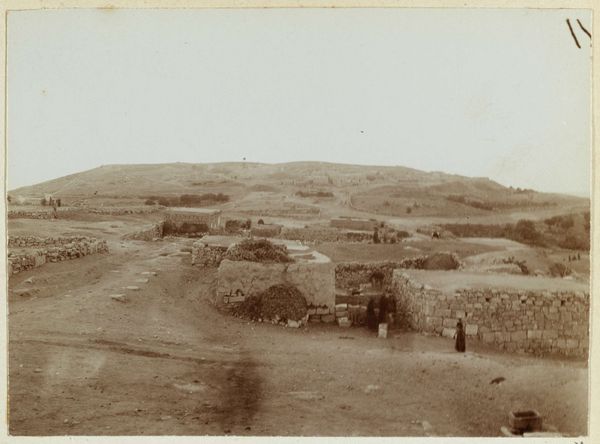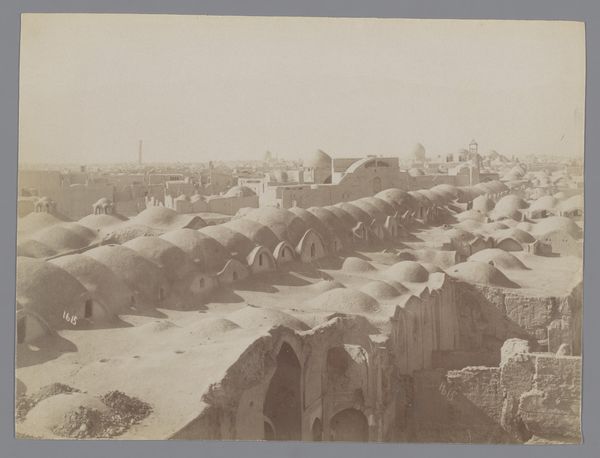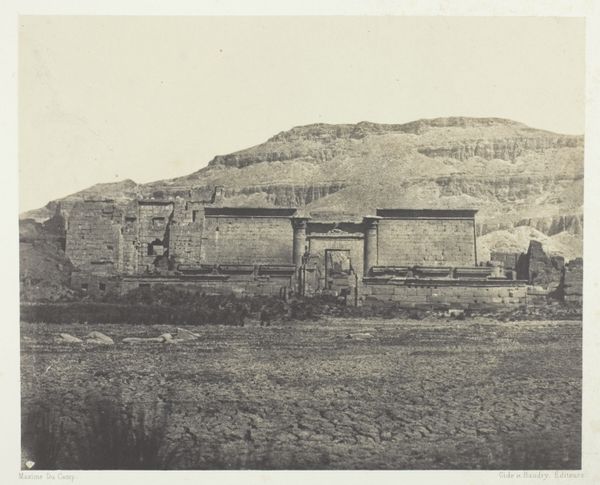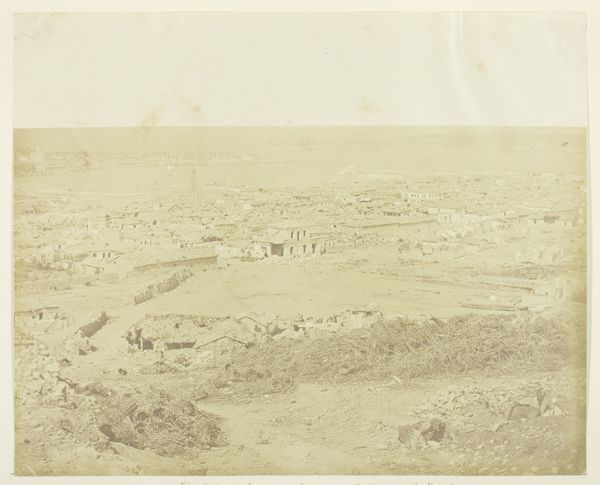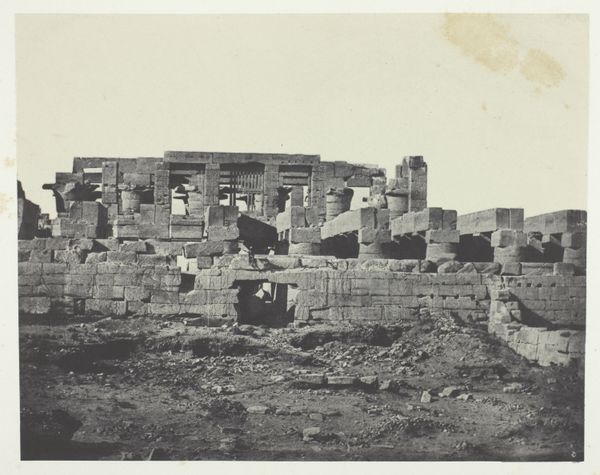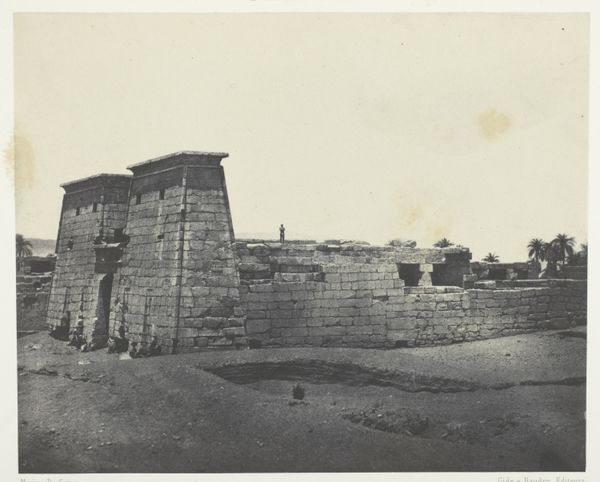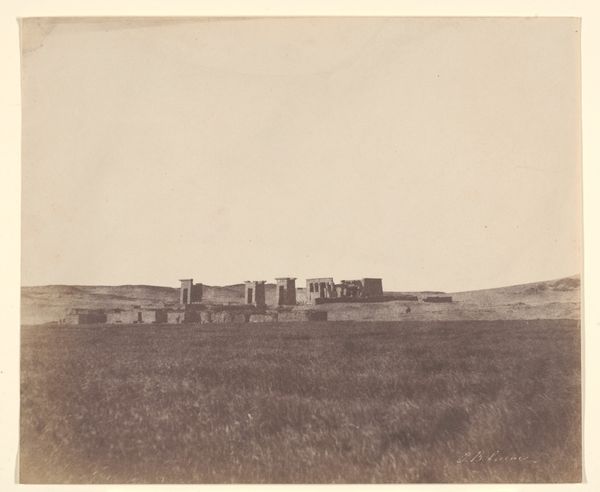
print, photography, architecture
# print
#
landscape
#
photography
#
19th century
#
cityscape
#
islamic-art
#
architecture
Copyright: Public Domain
Editor: We’re looking at a photograph from "The Wilkinson Album," dating from 1840 to 1869. It’s currently held at the Metropolitan Museum of Art. The sepia tones give it a dreamlike quality. It seems to depict a cityscape with ancient-looking structures. What story do you think this photograph tells? Curator: For me, it's a whisper from the past, isn't it? The print almost hums with the stories held within those aging structures. What grabs me is how the photographer captured this in-between space—between the earthly, represented by the weathered buildings and sun-drenched tones, and the more celestial feeling of those grand domes in the distance. I wonder, did the photographer consider how different religious architecture plays into a dialogue? What are your thoughts? Editor: That’s interesting... I hadn’t considered the juxtaposition of architectural styles and how it plays into it. It gives a visual insight of a very specific time period of the culture’s development. Curator: Exactly! This isn't just a pretty picture; it's a historical record. Think about it: photography was relatively new at this point. To capture this moment, this specific light... there's intention there. This wasn't casual snapshotting; it was documentation of a world and its identity. That almost monochromatic tone gives the idea that it happened a long, long time ago. Doesn’t it? Editor: Yeah, that is actually a really beautiful sentiment that you can just preserve some elements, and share a fragment, in that manner. Thanks, that actually helps to illuminate things in a completely different dimension than what I had thought about it, and provides a great deal more understanding! Curator: Wonderful! Isn't that what art’s about—finding new dimensions, new connections? It’s like a collaborative daydream across centuries.
Comments
No comments
Be the first to comment and join the conversation on the ultimate creative platform.
